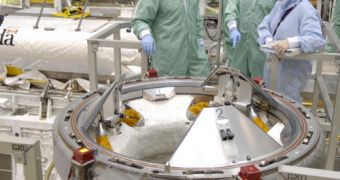Though space agencies have carried out the procedure successfully many times, docking to the International Space Station (ISS) is no easy task. Still, both manned and unmanned spacecraft need to do it once every couple of months, in order to sustain the six-astronaut crew currently in orbit. In order to address this issue, experts at NASA, the Ball Aerospace & Technologies Corp., and the Lockheed Martin Space Systems Company recently tested a new technology demonstrator that heralds an inventive navigation system for space docking.
The sensor which underwent testing worked flawlessly, experts from the three organizations said. The investigation was carried out in Boulder, Colorado, at a Ball facility that could replicate both manned and unmanned docking procedures. In a number of simulations, the engineers in charge of the tests managed to highlight the dynamic nature of the new sensors, Space Fellowship reports. The achievement is very important for the future of space exploration, given that the new sensors will go on the Orion Crew Exploration Vehicle, a component of Project Constellation.
This new spacecraft will dock to the ISS in a different manner from the space shuttle. As such, numerous assessments of the technology are needed before NASA allows for it to be installed on the actual Orion capsules. First of all, the sensors will fly aboard space shuttle Endeavor during its STS-134 mission to the station. The flight, which will take place in February 2011, will see the orbiter perform an in-orbit maneuver that has never been attempted in the history of the American space program. The spacecraft will separate from the ISS in mid-flight, and then attempt to dock again, this time with the aid of the new sensors.
If any malfunctions affect the device, the astronauts on the ISS and Endeavor will undoubtedly find it. The analysis will be a part of the Sensor Test for Orion Relative Navigation Risk Mitigation (STORRM) Development Test Objective (DTO). “The effective demonstration of Ball’s VNS [eye-safe flash LiDAR Vision Navigation Sensor] and DC [high definition Docking Camera] on the ground makes us all the more eager to see the STS-134 astronauts test the system aboard Endeavor,” explains Ball Aerospace CEO and president, David L. Taylor.

 14 DAY TRIAL //
14 DAY TRIAL //